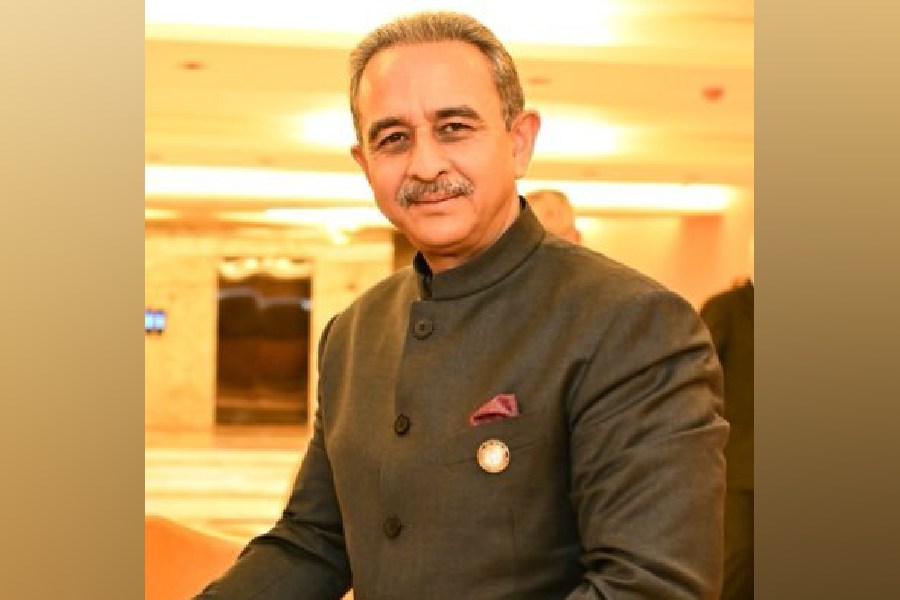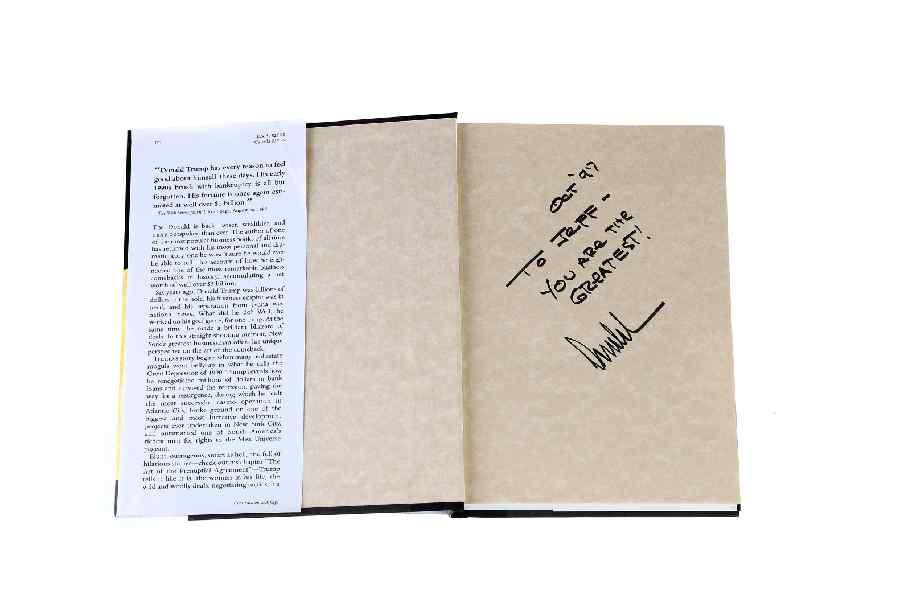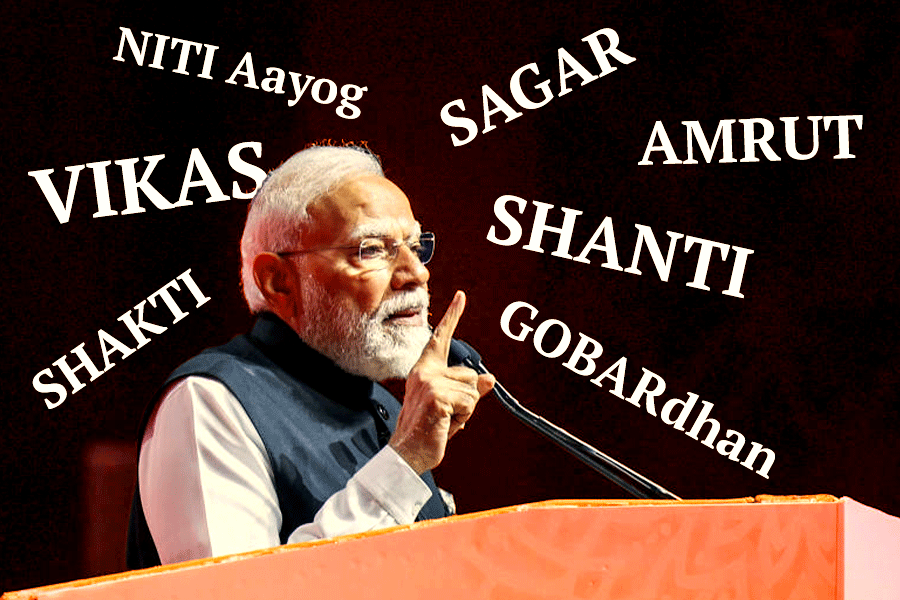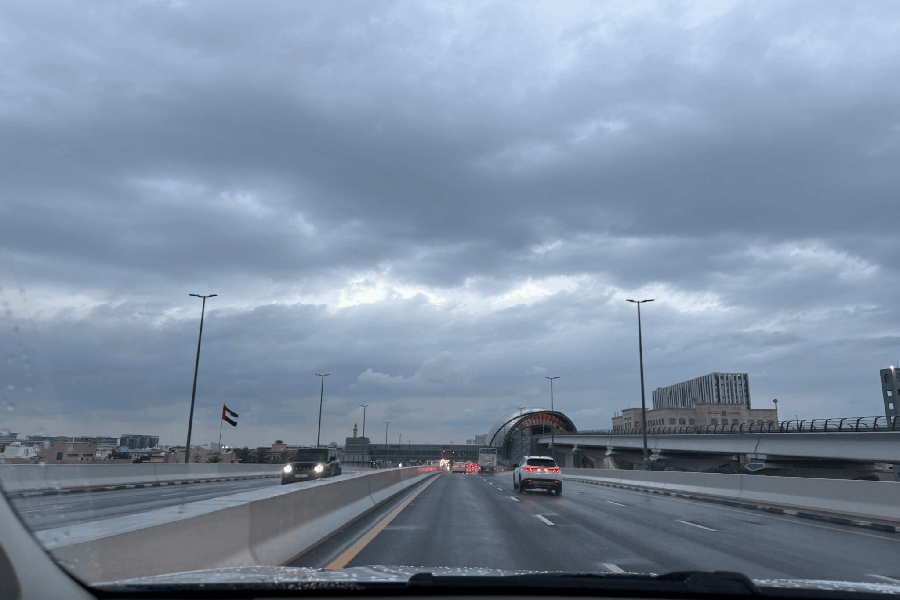 |
| Suchitra Sen’s daughter Moon Moon Sen bids farewell to her mother at the Keoratala crematorium on Friday. Picture by Bhubaneswarananda Halder |
Calcutta, Jan. 17: Suchitra Sen, who became an enduring memory in her lifetime and made contemporary Bengal marvel at an era that looked irresistible as well as irrevocable, passed away this morning. She was 82.
Having ruled the Bengali screen for three decades and then spent the next three decades as a recluse, she lost her 26-day battle against respiratory problems and other complications at Belle Vue Clinic on Friday morning.
On her last journey, too, she was shielded from the public eye by a brown coffin.
She suffered a cardiac arrest around 7.50am and her heart rate and blood pressure plummeted. Life-saving drugs were administered when her heart rate dropped below 40. Cardiac resuscitation started at 8.05am after her electrocardiograph went flat.
Twenty minutes later, the graph was still inert. Subrata Maitra, leading the team of doctors treating Suchitra for the past six years, examined her pulse one last time and declared her dead.
Suchitra’s passing occurred on the fourth death anniversary of Jyoti Basu — a coincidence that nevertheless draws attention to the highs and lows Bengal has undergone in multiple spheres.
There was little political about Suchitra, one half of the Bengali’s favourite Uttam-Suchitra screen pair, but the inexplicable twists and turns in history — and the statistical nuggets that hindsight throws up — ensured that the late 1970s became some sort of a watershed phase.
On the political front, Basu, who led what would eventually become the world’s longest-running elected communist government, came to power in 1977.
On the unrelated entertainment platform, Suchitra withdrew from the public eye a year later for unstated reasons and remained so for as many as 36 years. The astounding fact that she could guard her privacy in a crowded and connected city like Calcutta contributed in no small measure to the insatiable interest she evoked across age brackets and social clusters.
The abiding interest in Suchitra — apparent from the thousands who turned up for a last glimpse of the actress, from Belle Vue to Ballygunge Circular Road to Keoratala — can be somewhat explained by what British academic Rachel Dwyer, a professor of Indian Cultures and Cinema, had to say about stars such as Greta Garbo and Suchitra. “It’s a paradox of film that the star is always present — on film — but absent because they’re not actually there. Maybe this makes us even more intrigued when they become reclusive in real life while we still have their screen images.”
Why Suchitra chose to shut out the world remains a riddle. The general consensus appears to be revolving around an assessment that Suchitra was essentially a private person who found the demands of social life taxing, if not oppressing.
Then there was her deep spiritual attachment with the Ramakrishna Mission, from where she had got her diksha (initiation) in the late 1970s.
The Mission connection also helped her bond with her doctor, Subrata Maitra, since 2007. “I think the main reason behind her becoming a recluse was spiritual inclination…. I found her completely out of touch with the glamour world and any discussion about her heyday would upset her,” said the doctor who found her “soft-spoken, precise, reserved yet cordial” in her final years.
How did she look when he first met her in December 2007? “Although aged, she had the same grace and the same look in her eyes. She had the same personality, glamour and, yes, the same eyes,” said Maitra, who had fought the last battle to send her back home from Belle Vue.
Suchitra had been admitted to the nursing home on December 23 with acute respiratory distress and had been shifted to the ITU six days later following severe congestion and fluid accumulation in her lungs and chest pain.
Suchitra had spent 20 days in the private ITU room without a TV. When she wanted to see something other than oxygen masks and tubes, she used to ask the nurse to pull back the curtains on the large glass windows facing Minto Park and look outside –- the world from which she had withdrawn.
Daughter Moon Moon was constantly by her side, with granddaughters Raima and Riya also spending a lot of time in ITU 207. Chief minister Mamata Banerjee was the only visitor from outside the core family.
Doctors had started fearing the worst on Wednesday after she refused many modes of treatment, including non-invasive ventilation or bi-pap to push up the level of oxygen saturation in her blood.
Her oxygen saturation level fell below 80 and then 70 per cent but still she waved doctors away saying: “Amake ektu shanti te thakte dao (Please let me have some peace)”. Tears trickled from her eyes.
“I requested her with folded hands to let us carry on treatment. After that she let us put her on the bi-pap mask on Wednesday but refused again on Thursday morning,” said Maitra.
On Thursday evening, after a fresh crisis, the doctors resorted to intermittent use of bi-pap, which supplies oxygen directly to the lungs and that improved her vital parameters, but only for a few hours. Invasive procedures were not used to revive her because her family did not want her to undergo any more pain.
On Friday, Moon Moon, who has been spending the nights at Belle Vue, left in a taxi around 7.30am after her mother had stabilised somewhat following a scare around 6am. Only to rush back soon. Raima and Riya reached around 9am.
Long before the official announcement, heightened activity around Belle Vue — arrival of police reinforcements and putting up of barricades on Loudon Street — was an indicator of things to follow.
By 9.15am, senior police officers were all there. Fans, admirers and general enthusiasts also started converging on the sidewalks along Loudon Street. The chief minister arrived at 9.30am and took over the arrangements. Police commissioner Surajit Kar Purkayastha and senior Trinamul leaders trailed her.
At 10.30am, the chief minister made the final announcement at the Belle Vue gate, urging restraint. A little later, Moon Moon walked up to the assembled journalists and onlookers and said: “Amar Ma-er pokhyo theke apnader sobaike nomoshkar (My pranam to you on behalf of my mother).”
It was two hours before the hearse left the hospital for Vedanta, the housing complex at 52/4/1 Ballygunge Circular Road where Suchitra was desperate to return from her hospital bed. After around five minutes, the hearse rolled out of the big black gates and head for Keoratala crematorium.
The road to the Chetla crematorium was a sea of heads, but the administration did not allow the crowd or the chaos to colour the last rites of the screen goddess-turned-recluse.
Suchitra was consigned to the flames on a sandalwood pyre at 1.45pm, with daughter Moon Moon in a white sari performing the last rites. Daughters Raima and Riya, husband Bharat Dev Varma, Mamata and a host of Tollywood stars — Prosenjit to Mithun Chakraborty to Dev to Jeet — were by Moon Moon’s side.
By the time the final embers of pyre died out, darkness had descended. Moon Moon and her daughters left with the mortal remains of Suchitra around 6pm.
Before the day was done, Mamata took the microphone to declare that a stretch of Pramathesh Barua Sarani would be renamed as Suchitra Sen Sarani and Ballygunge Phari would have a Suchitra Sen Square.
The demise also brought Mamata and Buddhadeb Bhattacharjee on the same page today. The chief minister, who donned the role of organiser-in-chief for the last journey of the screen legend, posted a tribute on Facebook: “The legendary Suchitra Sen is no more. The world of cinema has lost an icon…. I am personally very touched…. She is not there, but she is there. She will be forever. In our midst, in our hearts. The Mahanayika has now found a new abode of peace.”
Hours later, her predecessor issued a condolence message. “With a blend of personality and beauty, Suchitra Sen occupied a unique place in Bengali cinema. Bengali cinema will be eternally indebted to her. I am deeply saddened by her death,” wrote Bhattacharj

We wear the mask that grins and lies,
It hides our cheeks and shades our eyes,
This debt we pay to human guile;
With torn and bleeding hearts we smile,
And mouth with myriad subtleties.
Why should the world be over-wise,
In counting all our tears and sighs?
Nay, let them only see us, while
We wear the mask.
We Wear the Mask Paul Laurence Dunbar











